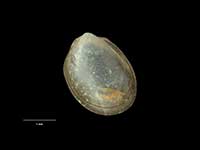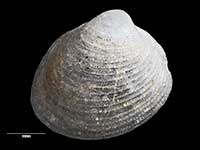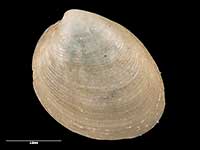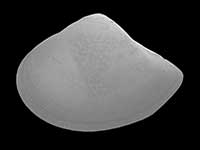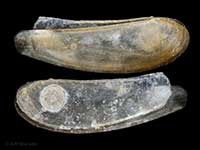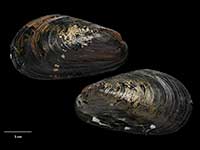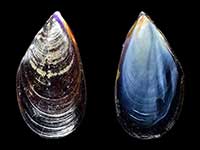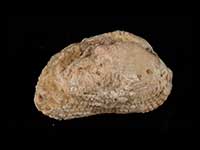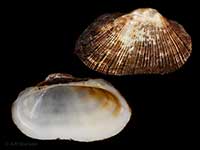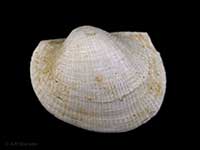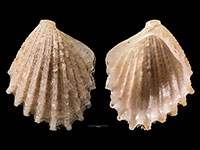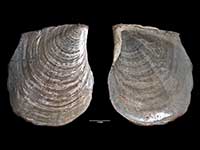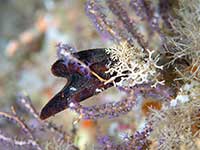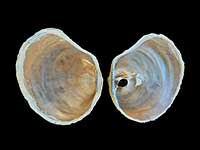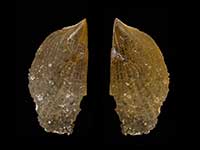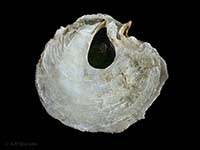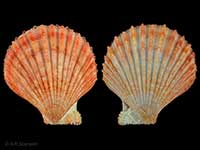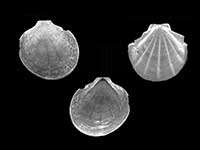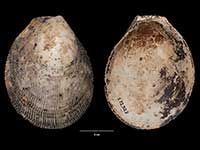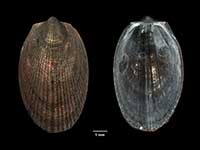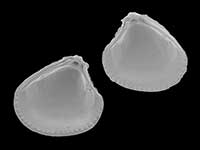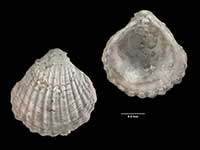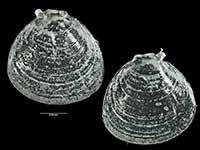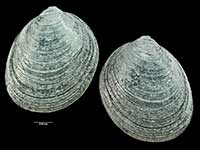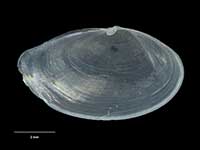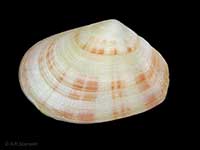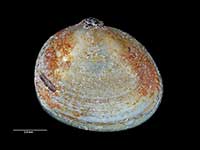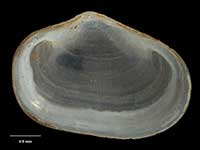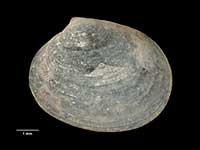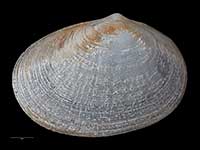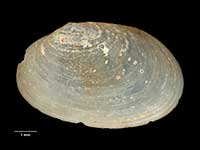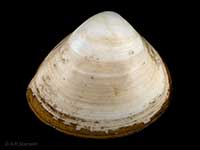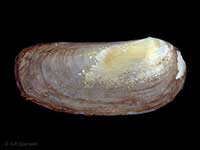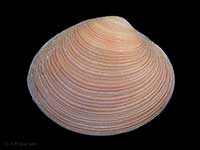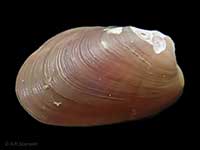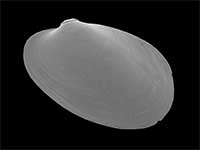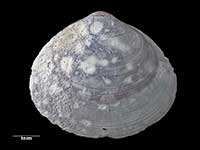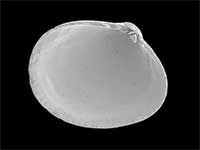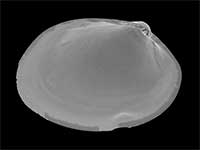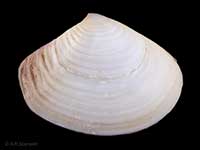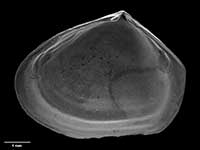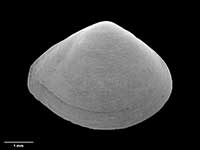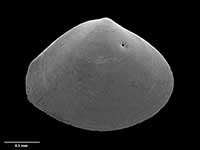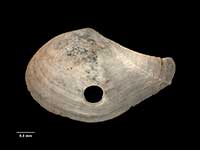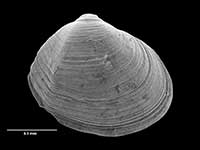Start > Taxonomic Class: Bivalvia
Solemyidae
Nucinellidae
Nuculidae
Malletiidae
Neilonellidae
Nuculanidae
Yoldiidae
Mytilidae
- Arcuatula senhousia
![Arcuatula senhousia]()
- Xenostrobus neozelanicus
![Xenostrobus neozelanicus]()
- Xenostrobus securis
![Xenostrobus securis]()
- Adipicola osseocola
![Adipicola osseocola]()
- Bathymodiolus manusensis
![Bathymodiolus manusensis]()
- Bathymodiolus septemdierum
![Bathymodiolus septemdierum]()
- Benthomodiolus lignocola
![Benthomodiolus lignocola]()
- Gigantidas gladius
![Gigantidas gladius]()
- Gigantidas tangaroa
![Gigantidas tangaroa]()
- Idas japonicus
![Idas japonicus]()
- Terua arcuatilis
![Terua arcuatilis]()
- Vulcanidas insolatus
![Vulcanidas insolatus]()
- Dacrydium pelseneeri
![Dacrydium pelseneeri]()
- Zelithophaga truncata
![Zelithophaga truncata]()
- Aulacomya maoriana
![Aulacomya maoriana]()
- Modiolus areolatus
![Modiolus areolatus]()
- Gregariella barbata
![Gregariella barbata]()
- Musculus impactus
![Musculus impactus]()
- Mytilus galloprovincialis
![Mytilus galloprovincialis]()
- Perna canaliculus
![Perna canaliculus]()
- Septifer cumingii
![Septifer cumingii]()
Arcidae
Glycymeridae
Limopsidae
Philobryidae
Isognomonidae
Margaritidae
Pteriidae
Pulvinitidae
Pinnidae
Ostreidae
Anomiidae
Cyclochlamydidae
Pectinidae
Propeamussiidae
Spondylidae
Limidae
Hyriidae
Carditidae
- Carditella delli
![Carditella delli]()
- Hamacuna aupouria
![Hamacuna aupouria]()
- Hamacuna gibbosa
![Hamacuna gibbosa]()
- Hamacuna otagoensis
![Hamacuna otagoensis]()
- Cardita distorta
![Cardita distorta]()
- Condylocuna concentrica
![Condylocuna concentrica]()
- Condylocuna mernoo
![Condylocuna mernoo]()
- Cuna carditelloides
![Cuna carditelloides]()
- Cuna compressidens
![Cuna compressidens]()
- Cuna laqueus
![Cuna laqueus]()
- Cuna mayi
![Cuna mayi]()
- Cuna mendica
![Cuna mendica]()
- Pleuromeris benthicola
![Pleuromeris benthicola]()
- Pleuromeris finlayi
![Pleuromeris finlayi]()
- Pleuromeris latiuscula
![Pleuromeris latiuscula]()
- Pleuromeris marshalli
![Pleuromeris marshalli]()
- Pleuromeris ultima
![Pleuromeris ultima]()
- Pleuromeris zelandica
![Pleuromeris zelandica]()
- Powellina brookesi
![Powellina brookesi]()
- Purpurocardia purpurata
![Purpurocardia purpurata]()
- Purpurocardia reinga
![Purpurocardia reinga]()
Condylocardiidae
Crassatellidae
Hiatellidae
Cardiidae
Psammobiidae
Semelidae
Tellinidae
Galeommatidae
Lasaeidae
- Arthritica bifurca
![Arthritica bifurca]()
- Arthritica crassiformis
![Arthritica crassiformis]()
- Borniola bidentifera
![Borniola bidentifera]()
- Borniola decapitata
![Borniola decapitata]()
- Borniola neozelanica
![Borniola neozelanica]()
- Borniola powelli
![Borniola powelli]()
- Borniola profunda
![Borniola profunda]()
- Borniola quadrata
![Borniola quadrata]()
- Borniola reniformis
![Borniola reniformis]()
- Borniola taieriensis
![Borniola taieriensis]()
- Kellia cycladiformis
![Kellia cycladiformis]()
- Kellia minima
![Kellia minima]()
- Lasaea hinemoa
![Lasaea hinemoa]()
- Lasaea maoria
![Lasaea maoria]()
- Montacuta semiradiata
![Montacuta semiradiata]()
- Myllita stowei
![Myllita stowei]()
- Myllita vivens
![Myllita vivens]()
- Myllita vivens pinguis
![Myllita vivens pinguis]()
- Mysella alpha
![Mysella alpha]()
- Mysella hounselli
![Mysella hounselli]()
- Mysella lachlani
![Mysella lachlani]()
- Mysella larochei
![Mysella larochei]()
- Mysella morioria
![Mysella morioria]()
- Mysella tellinula
![Mysella tellinula]()
- Mysella unidentata
![Mysella unidentata]()
- Tellimya aupouria
![Tellimya aupouria]()
- Tellimya reinga
![Tellimya reinga]()
Basterotiidae
Lucinidae
Thyasiridae
Corbulidae
Pholadidae
Teredinidae
Xylophagaidae
Sphaeriidae
Chamidae
Mactridae
Mesodesmatidae
Ungulinidae
Veneridae
- Austrovenus stutchburyi
![Austrovenus stutchburyi]()
- Bassina yatei
![Bassina yatei]()
- Dosina mactracea
![Dosina mactracea]()
- Dosinia anus
![Dosinia anus]()
- Dosinia greyi
![Dosinia greyi]()
- Dosinia lambata
![Dosinia lambata]()
- Dosinia maoriana
![Dosinia maoriana]()
- Dosinia subrosea
![Dosinia subrosea]()
- Globivenus toreuma
![Globivenus toreuma]()
- Gomphina maorum
![Gomphina maorum]()
- Irus elegans
![Irus elegans]()
- Irus reflexus
![Irus reflexus]()
- Leukoma crassicosta
![Leukoma crassicosta]()
- Notocallista multistriata
![Notocallista multistriata]()
- Tawera marionae
![Tawera marionae]()
- Tawera mawsoni
![Tawera mawsoni]()
- Tawera phenax
![Tawera phenax]()
- Tawera sphaericula
![Tawera sphaericula]()
- Tawera spissa
![Tawera spissa]()
- Venerupis largillierti
![Venerupis largillierti]()
Neoleptonidae
Cyrenidae
Cyamiidae
Gaimardiidae
Myochamidae
Cleidothaeridae
Parilimyidae
Thraciidae
Periplomatidae
Cuspidariidae
- Austroneaera brevirostris
![Austroneaera brevirostris]()
- Austroneaera brooki
![Austroneaera brooki]()
- Austroneaera finlayi
![Austroneaera finlayi]()
- Austroneaera raoulensis
![Austroneaera raoulensis]()
- Austroneaera tangaroa
![Austroneaera tangaroa]()
- Cardiomya rectimarginata
![Cardiomya rectimarginata]()
- Cuspidaria fairchildi
![Cuspidaria fairchildi]()
- Cuspidaria morelandi
![Cuspidaria morelandi]()
- Cuspidaria morioria
![Cuspidaria morioria]()
- Cuspidaria tuhua
![Cuspidaria tuhua]()
- Cuspidaria willetti
![Cuspidaria willetti]()
- Plectodon lepidus
![Plectodon lepidus]()
- Plectodon pruinosus
![Plectodon pruinosus]()
- Plectodon regalis
![Plectodon regalis]()
- Pseudogrippina wanganellica
![Pseudogrippina wanganellica]()
- Pseudoneaera wellmani
![Pseudoneaera wellmani]()
- Rhinoclama aupouria
![Rhinoclama aupouria]()
- Rhinoclama trailli
![Rhinoclama trailli]()
Spheniopsidae
Poromyidae
Verticordiidae
Euciroidae
Lyonsiellidae
Key to Geographical Ranges

The symbols K.A.C.F.M.An. are used to indicate the geographical range of the species.
They have been adopted to give an approximation of the range of each species within New Zealand.
K=
Kermadec Islands
A=
Aupourian - Kaipara Harbour, north around North Cape, encompassing the Three Kings Islands and south to East Cape
C=
Cookian - Lower North Island and the northern part of the South Island
F=
Forsterian - Otago, Fiordland and Stewart Island
M=
Moriorian - Chatham Islands, Pitt Island
An=
Antipodean - Subantarctic Islands of New Zealand
Fw =
Freshwater
L =
Land
N =
North Island
S =
South Island
R =
Recent
Sf =
Subfossil
Fo =
Fossil





